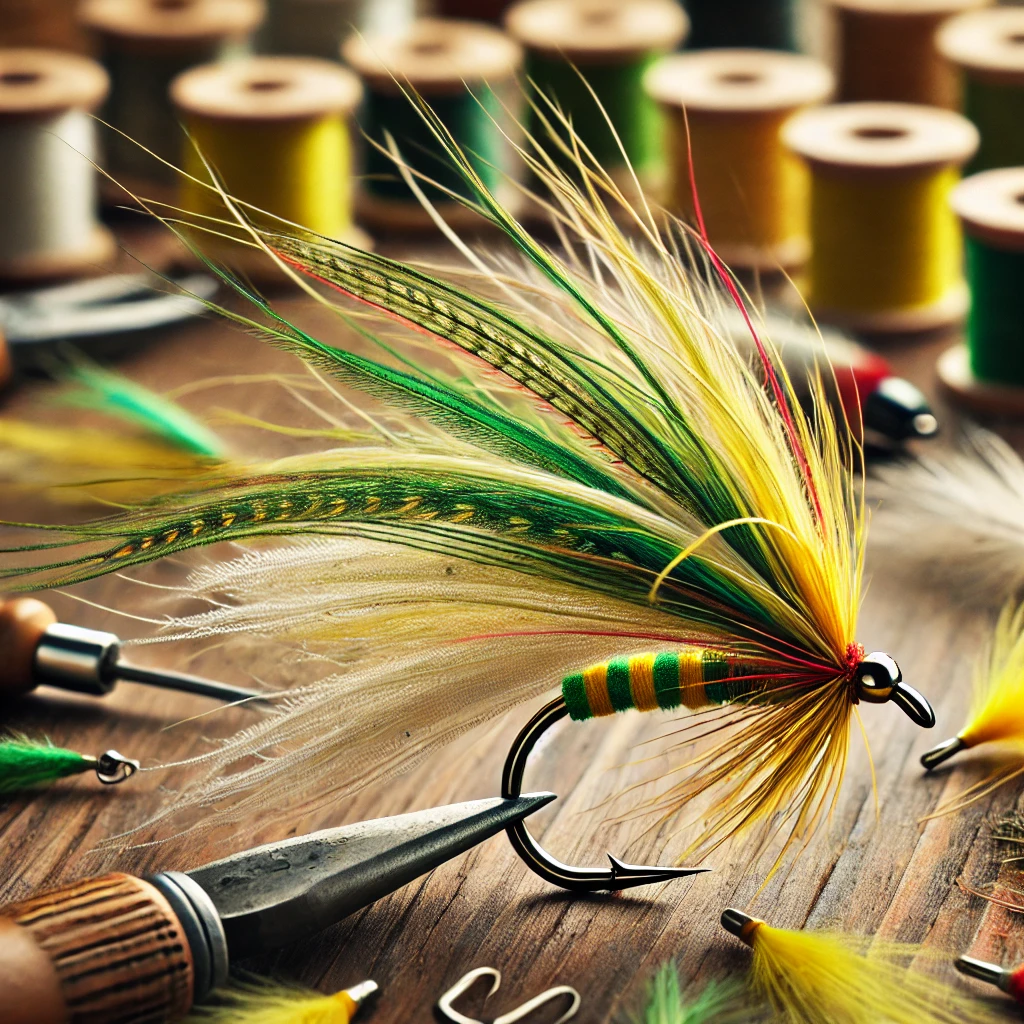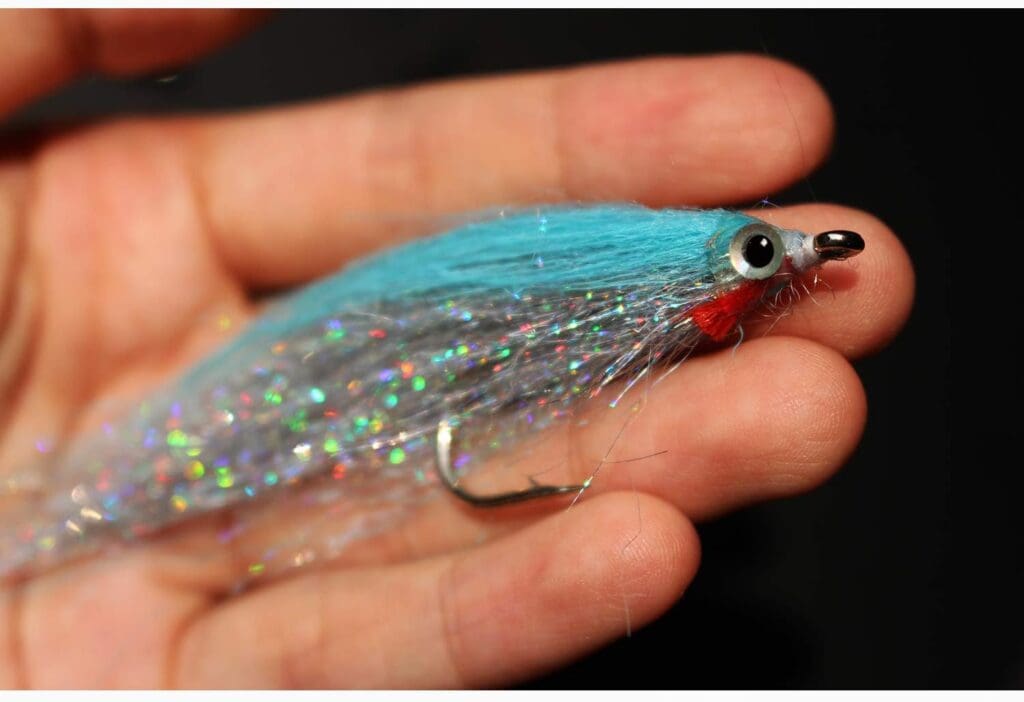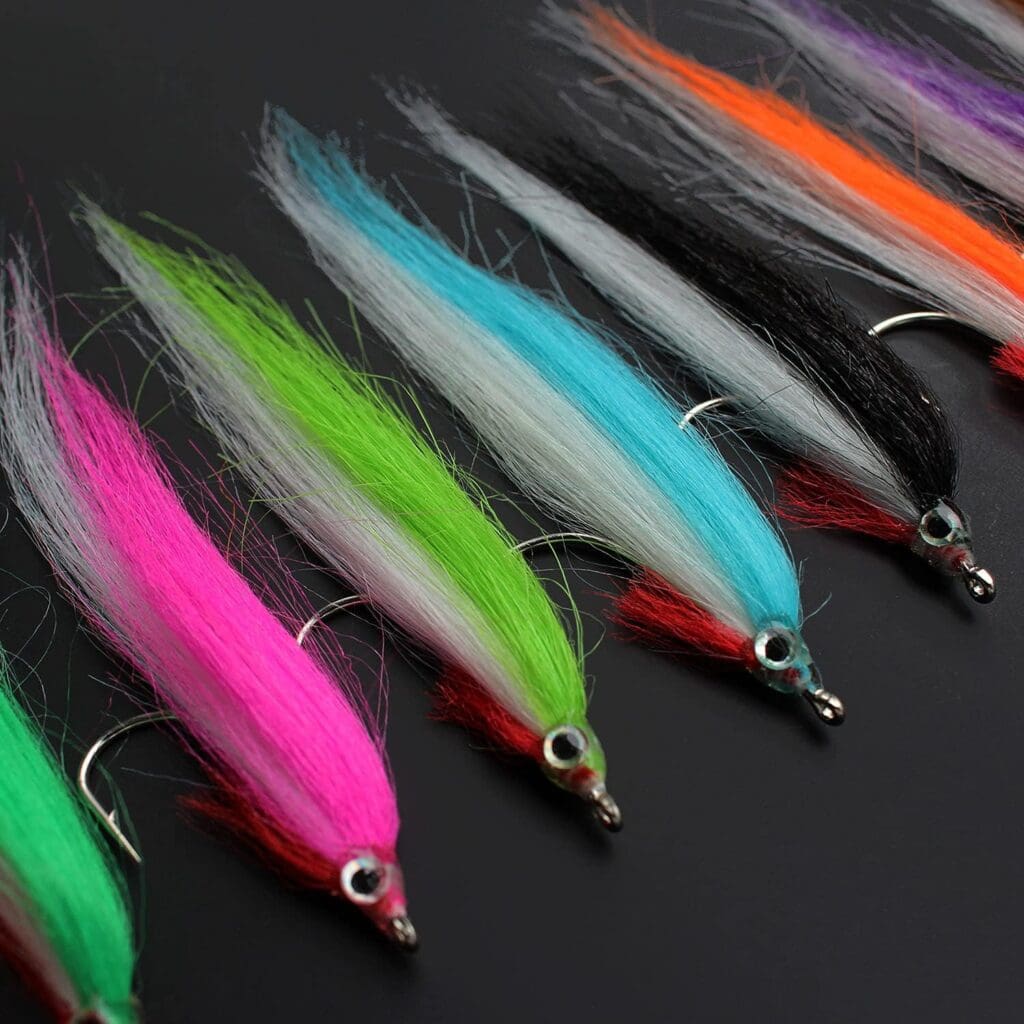What is a Streamer Definition
In fly fishing, anglers use a streamer, an artificial fly, to mimic small baitfish.
Unlike dry flies that float, designers make these flies to fish below the water’s surface.
They come in various sizes and colours, resembling different baitfish fish prey on.
Baitfish flies can be retrieved quickly or slowly, depending on the situation and desired action.

Components of a Streamer
- Hook: The hook is the part that catches the fish. These hooks are typically larger and sturdier than dry fly hooks.
- Shank: The fly body is tied to the metal part of the hook, known as the shank.
- Body: The body is the main part of the fly that imitates the baitfish. Various materials, including feathers, synthetic fibres, or fur, can make up the composition.
- Weight: They often have weight added to them, usually near the head, to help them sink and swim more profoundly in the water.
- Wing: Some have wings made of feathers or synthetic materials that help them flutter and imitate a swimming baitfish.
Different Types of Streamer Fly Patterns
Each fly pattern, designed to mimic a specific baitfish or aquatic insect, offers a unique approach to fishing. Some popular types include:
- Woolly Buggers: These versatile flies come in various colours and sizes and can imitate many different baitfish.
- Clouser Minnows: These have minnow-shaped bodies and a weighted head for deeper diving.
- Lefty’s Deceivers: Their lifelike swimming action makes them known for catching various fish.
- Egg-Sucking Leeches: These imitate leeches, a common food source for many fish.
- Zonker: Features a strip of fur mimicking a fish.
- Muddler Minnow: Floats are good for surface-feeding fish.
Importance
Artificial flies are vital for anglers targeting fish like trout and bass. They work well in various aquatic settings, including calm and swift waters.
Context and Usage
Anglers typically use these fly patterns in scenarios where fish prey on baitfish, aiming for realistic imitation. Anglers can cast these patterns upstream and retrieve them downstream or across the current, using a stripping motion for effectiveness. The retrieve speed and technique can be varied to imitate different baitfish behaviours.
Examples
Example 1: A fly fisherman uses one to cast across a river pool, hoping to catch a large trout feeding on baitfish.
Example 2: An angler uses a small one to fish a shallow stream for bass feeding on minnows.
Understanding Streamers
It’s important to remember that not all flies that sink are streamers. Designers create some patterns to mimic baitfish, while others, like nymphs, sink and represent aquatic insects.
Related Glossary Terms
Dry Fly: Explore the allure of dry flies and learn why they’re a favourite among anglers!
Artificial Fly: A handcrafted lure designed to mimic insects and baitfish for fly fishing.
Visual and Fishing Streamer Aids
“🎣 Video Guide: Master the Art of Tying Streamer Flies Like a Pro 🐟
External Resources about Streamers
- West Coast Fishing Adventures: – This outfitter offers guided fishing trips in British Columbia, including fly fishing, salmon fishing, and halibut fishing.
- Master Tying Streamer Flies Become a Pro Today is a helpful video tutorial on tying a popular artificial fly pattern.
Related Articles
- Tying Streamer Flies Like a Pro | Master the Art Now!: It provides detailed advice on fly-tying techniques and skills. Additionally, it stresses a professional method to master the art.
- Top 10 Streamer Flies For Trout: This article outlines the top 10 trout fishing fly patterns. It aims to improve fishing efficiency and success.

